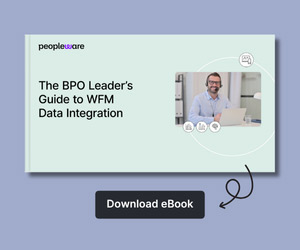Ben Levy at Enghouse explores how hybrid contact centres are evolving and what organisations need to understand when combining on-premises and cloud technology.
Across the contact centre industry, the debate of an on-prem contact centre vs. a cloud contact centre continues to grow.
Cloud adoption is accelerating, but many organizations remain heavily invested in on-premises technology.
At the same time, some who moved fully to the cloud are now repatriating workloads – for example, Flexera’s 2025 report finds that just over 20% of workloads and data have been moved back from public cloud to private or on-prem environments.
That tension raises an important question: is the answer, in fact, a bit of both? Can a hybrid contact centre deliver the best of both worlds, blending on-premises infrastructure with cloud-based solutions and creating a flexible model that adapts well to business needs?
Looking ahead, Gartner predicts that by 2027, 90% of organizations will adopt hybrid cloud strategies, showing that hybrid is not just a transitional approach, but likely the standard for infrastructure design.
Industry research from ContactBabel suggests that many organizations are already moving in this direction, for example, running certain CX applications, such as analytics or workforce management, in the cloud while keeping core systems on premises.
This pattern shows that hybrid is not just a theoretical choice, but a practical model that’s steadily gaining traction.
What Is a Hybrid Contact Centre?
A hybrid contact centre combines existing on-premises systems with cloud applications. Businesses can keep specific functions on premises – for example, those requiring direct control or tied to compliance requirements – while moving other workloads to the cloud for agility and scale.
This model is increasingly popular among enterprises that want to modernize without abandoning significant technology investments.
Advantages of Hybrid Contact Centres
Flexibility
A hybrid approach lets organizations choose where workloads run, based on business priorities. Sensitive or compliance-heavy functions can stay on premises, while customer-facing tools or analytics move to the cloud for greater agility. This mix ensures companies don’t have to compromise between control and innovation.
Cost Optimization
Hybrid models allow businesses to balance capital expenses (CapEx) for hardware with ongoing operational expenses (OpEx).
For example, a business might continue to use existing hardware while adopting cloud-based applications on a subscription basis. This allows cost alignment with usage and avoids large one-time investments.
Business Continuity
Maintaining both on-premises and cloud environments improves contact centre business continuity. If one system goes down, the other can act as a backup, reducing the risk of service disruptions.
Built-in redundancy and failover options help organizations maintain consistent customer service even during outages or unexpected events.
Gradual Cloud Migration
A hybrid contact centre enables phased migration instead of an all-or-nothing shift. Companies can start by moving non-critical workloads to the cloud, testing adoption and performance before tackling larger transitions.
This measured approach reduces disruption to agents and customers while spreading out costs over time.
Support for Remote and Hybrid Workforces
With a hybrid contact centre, companies can deliver cloud-enabled collaboration and workforce engagement tools without abandoning existing infrastructure.
This makes it easier to support agents working remotely, in-office, or in a hybrid model. The cloud extends reach and accessibility, while on-premises systems maintain reliability for core operations.
Challenges of Hybrid Contact Centres
Complexity in Integration
One of the biggest hurdles is ensuring that on-premises systems and cloud solutions work seamlessly together.
Without the right integration, workflows can be disrupted, data may not synchronize properly, and the customer experience could suffer. Successful hybrid deployment requires careful planning and vendor solutions that support interoperability.
Management Overhead
Operating two environments means IT teams must monitor, secure, and maintain both. This increases the demand for skilled resources and specialized knowledge.
According to IDC, by 2026 65% of technology buyers will prioritize as-a-service consumption models to simplify management and control costs, a clear signal of how widespread this challenge has become.
Potential Fragmentation
If the hybrid environment is not carefully orchestrated, agents and customers may face inconsistent experiences.
For example, reporting dashboards may differ between platforms, or agents may need to switch between tools mid-interaction. Establishing unified processes and a clear governance framework is essential to avoid silos.
Cost Uncertainty
Hybrid models can deliver cost benefits, but those savings depend heavily on planning. Without a clear strategy, contact centres might overspend by duplicating licenses, overprovisioning cloud services, or underutilizing existing hardware. Cost modelling and regular reviews are critical to ensure hybrid remains a financially sound choice.
When a Hybrid Contact Centre Makes Sense
Highly Regulated Industries
Sectors such as finance, healthcare, and government often face strict compliance and data sovereignty requirements.
A hybrid contact centre allows these organizations to keep sensitive data on premises while still benefiting from cloud agility for less critical workloads. This balance ensures regulatory obligations are met without stalling innovation.
Enterprises with Large Legacy Investments
Organizations that have invested heavily in on-premises infrastructure may not be ready to abandon those assets.
A hybrid approach maximizes the value of existing systems while extending capabilities through the cloud. This helps protect prior investments while still moving toward modernization.
Step-by-Step Migration Strategies
Not every organization can or should move to the cloud in one go. Hybrid deployments enable a phased migration where certain functions (like reporting or workforce management) can shift first, while core systems remain on premises until the business is ready. This approach minimizes risk and disruption.
Disaster Recovery and Backup Needs
A hybrid model strengthens contact centre business continuity by offering cloud-based backup and disaster recovery.
If an on-premises system fails, cloud solutions can maintain operations and customer service. According to IDC, 70% of enterprises adopt hybrid or multi-cloud approaches specifically to improve resilience and redundancy, underscoring the value of hybrid in safeguarding customer experience.
Support for Distributed Workforces
With remote and hybrid workforces now the norm, organizations need cloud-enabled flexibility without abandoning in-house control.
Hybrid deployments allow remote agents to access cloud-based tools while ensuring sensitive customer data remains securely stored and managed on premises.
Examples of Hybrid Contact Centre
Hosted with On-Premises Redundancy
One common hybrid approach is to run a primary contact centre platform in the cloud while maintaining a redundant node on premises. For example, the cloud platform might be hosted in Microsoft Azure and managed by a service provider.
On-Premises with Cloud Enhancements
Another hybrid model keeps the core contact centre platform on premises under direct organizational control while extending capabilities through cloud services.
For instance, businesses may add AI-powered transcription, multi-factor authentication, or workforce management applications from the cloud.
This approach preserves the governance and security of an on-premises deployment while also benefiting from the innovation and scalability that cloud technologies provide.
Hybrid as a Transitional Environment
In some cases, hybrid deployments are not the long-term destination but a practical step in the journey. Organizations may use hybrid models to support temporary situations such as mergers, technology upgrades, or rapid scaling.
Running both on-premises and cloud environments in parallel provides continuity while IT teams plan and implement the next stage of the architecture.
Is it Really the Best of Both Worlds?
Hybrid contact centres bring strong advantages but also challenges that must be understood. For some organizations, hybrid is best viewed as a strategic or transitional step rather than a permanent end state, while for others it’s the obvious solution.
Ultimately, the success of hybrid depends on execution: seamless integration, thoughtful vendor choice, and alignment with a long-term contact centre strategy are all critical factors in this – or in fact any – deployment choice.
With hybrid cloud strategies predicted to reach 90% adoption by 2027, it’s clear this model is moving from exception to expectation, but its value still depends on matching the right approach to your business priorities.
So, is a hybrid contact center really the best of both worlds? The answer is yes, if it aligns with your business needs and is executed with the right strategy.
Hybrid deployments can balance control and innovation, protect existing investments, and create a smoother path to the cloud. Just remember that success depends on careful integration, cost planning, and a clear contact centre strategy.
For many organizations, hybrid is no longer just an interim step: it is becoming a deliberate strategy for building resilient and future-ready contact centres.
This blog post has been re-published by kind permission of Enghouse Interactive – View the Original Article
For more information about Enghouse Interactive - visit the Enghouse Interactive Website
Call Centre Helper is not responsible for the content of these guest blog posts. The opinions expressed in this article are those of the author, and do not necessarily reflect those of Call Centre Helper.
Author: Enghouse Interactive
Reviewed by: Rachael Trickey
Published On: 27th Nov 2025
Read more about - Guest Blogs, Enghouse Interactive






 Enghouse Interactive delivers technology and expertise to help bring your customers closer to your business through its wide range of customer contact solutions.
Enghouse Interactive delivers technology and expertise to help bring your customers closer to your business through its wide range of customer contact solutions. 






























